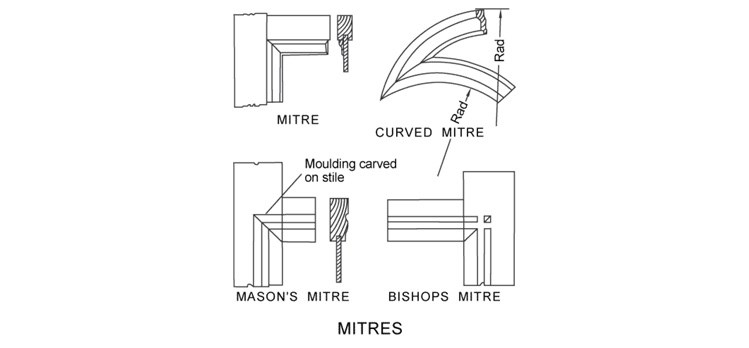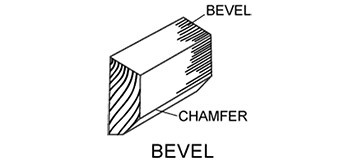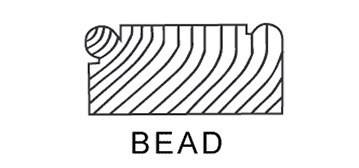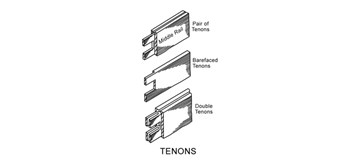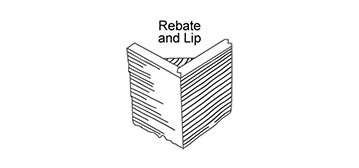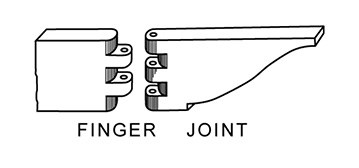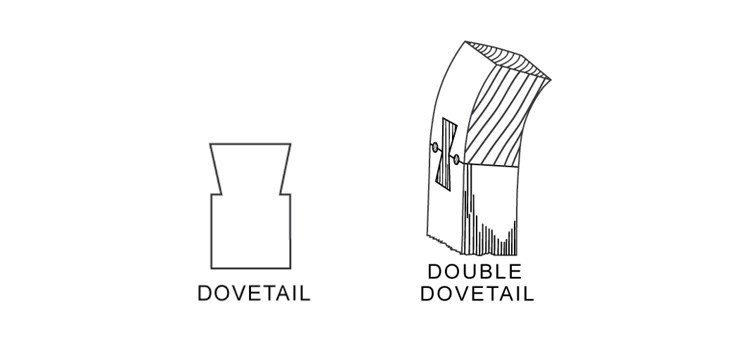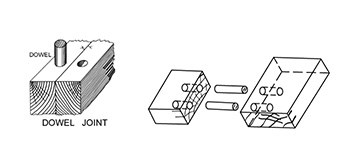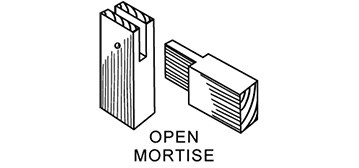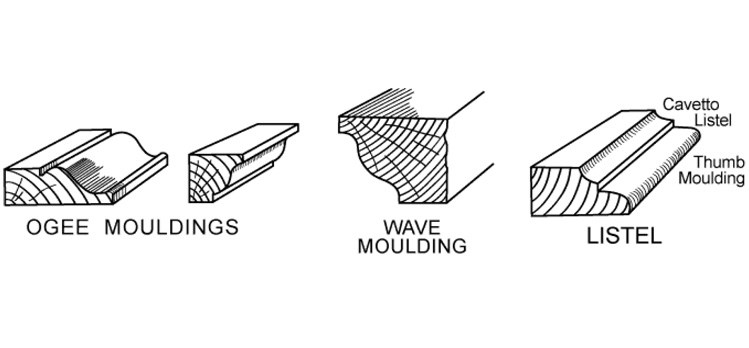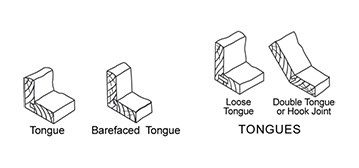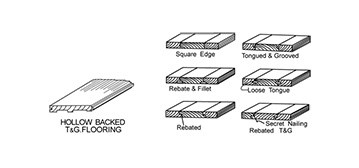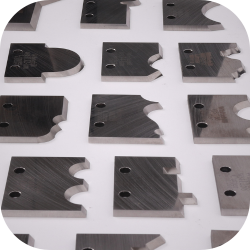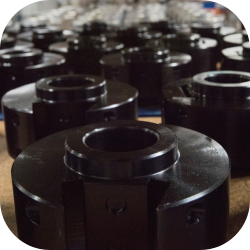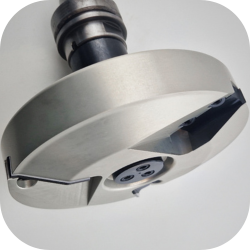Glossary of Woodworking Terms
Tooling Components and Related Terminology
Cutter Block (Also known as Cutter Head):Used in either mechanical or manual machining to hold brazed or mechanically secured cutters for a variety of milling functions.
Chip Limiting (Also known as Chip thickness limitation tooling):
Tooling which significantly reduces the severity of injury if a machine operator’s fingers contact the rotating tool. They reduce the risk of workplace kickback and the many injuries that this can cause. They are designed to prevent the cutter from being ejected from the tool body as there are two means of securing the cutters (serrations in the head and knife as well as a bolted clamping wedge).
While chip limited tooling "limits" the chip size at each revolution of the cutter, this does not result in limitations to the depth of cut or feed rate for most standard machining operations on manual machines.
MAN:
This formal designation indicates that the tooling when used per manufacturers instructions satisfies all the requirements for low kick back and chip limitation and is suitable for use on manually operated machines such as spindle moulders.
To learn more about chip limited tooling and the safety aspects of hand-fed machines check out the resources below by the Health and Safety Executive:
https://www.hse.gov.uk/woodworking/tooling.htm
https://www.hse.gov.uk/pubns/wis37.pdf
MEC:
Tools marked "MEC" are mechanically fed machines only such as 4 sided moulders and CNC machines.
Spindle Moulder (Also known as a Shaper):
Stationary woodworking machine in which a vertically orientated spindle drives cutter heads to mill profiles on wood stock (Blank).
Scribe and Mould (Also known as Cope and Stick):
For furniture and millwork components that employ rails and stiles, often the ends of rails are scribed to seamlessly meet the mould applied to the inner edges of the stiles. The associated cutters are often referred to as the scribe cutters (or scribers) and mould cutters. In North America these are referred to as the "Cope" and "Sticking" cutters respectively.
Turn Blade:
Replaceable cutters or knives that have multiple edges prepared for use and can simply be loosened and or rotated to a fresh edge and secured when the first edge is dull.
Terms for Key Window Components
Glazing Bars (Also called Muntin or Sash Bars).
A strip of wood dividing and securing individual panes of glass in a window. Vertical members between and parallel to the stiles of a panel door and a vertical member dividing wainscotting.
Glazing Bead
Narrow sections of beading or moulded wood designed to secure the glass in place in the sash.
Horn
Originally used to reinforce upper sashes, today horns are a decorative profile added to a sliding sash window.
Mullion
A vertical dividing member running between rails of a window sash, or dividing a larger window opening vertically into multiple sash units.
Rail
Horizontal top and bottom members of doors and window sashes. In traditional construction the ends of the rails are scribed to match any profile on the stiles, referred to as "coping" in North America.
Sash
The exterior frame around a window that surrounds and holds the glass and additional components. The frame is made up of rails (horizontal components) and stiles (vertical components).
Sill
The lowest horizontal member of a door or window frame.
Stile
A vertical side member of a door or window sash.
Transom
A horizontal dividing member running between stiles of a window sash, or dividing a larger window opening vertically into multiple sash units. Can also refer to the actual glazing unit above the transom.
Popular Joint Styles
Capillary Drip groove
A groove cut or moulded in the underside of a door or windowsill to prevent rainwater running back to the wall. This is a common feature of well-designed windows and doors.
Dowelling (Also known as rounded wood).
Cylindrical piece or length of wood.
Dovetail
A type of joint. One piece has a splayed shape - like a dove's tail - and fits into the socket or eye of the second piece.
Finger-jointed (Also called end-jointed).
Shorter pieces of wood are joined to create a longer piece of wood. The joint looks like interlaced fingers.
Groove
A long narrow channel. Also see Tongued and grooved.
Horn
Originally used to support the structure, today horns are a decorative profile added to a sliding sash window.
Interlocking joint
Interlocking is a way of joining timber. Each piece is cut to fit against or into another to prevent displacement and to transfer forces. The joint must either be in compression or pinned or keyed after assembly.
Mitre
Two pieces forming an angle, or a joint formed between two pieces of wood by cutting bevels of equal angles at the ends of each piece.
Mortise
A recess or hole, formed in one piece to receive a projection or tenon on the end of another piece.
Moulded wood
Strips of wood shaped with contours for decoration or ornament.
Nosing
The front edge of a stair tread.
Plinth
The base board put on an inside wall, usually on a kitchen unit.
Rebate
Also known as a "Rabbit".
Scribe and Mould (Also known as Cope and Stick)
For furniture and millwork components that employ rails and stiles, often the ends of rails are scribed to seamlessly meet the mould applied to the inner edges of the stiles. The associated cutters are often referred to as the scribe cutters (or scribers) and mould cutters. In North America these are referred to as the "Cope" and "Sticking" cutters respectively.
Skirting or skirting board (Also called a washboard or baseboard)
A moulded base board to an inside wall.
Tenon
The end of a piece of wood that's been reduced in section to fit in a recess or cavity of the same size or a projecting tongue on the end of a piece of wood which fits into a corresponding mortise.
Tongue
A reduction of the thickness of the edge of a board. Also see Tongued and grooved.
Tongue and groove
Boards with one edge that's grooved and the other that's flagged with a tongue or extended edge. When assembled side by side the tongue fits into the groove.
Below are the different names used for popular Profiles:
Lambs Tongue/ Cow's Lick
Pig's Ear / Hand Rail
Quadrant Moulding/ Quarter Round
Profile Images
